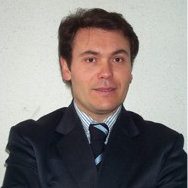Advance in Implantology, Bone Biomaterials and Regenerative Procedures
A special issue of Materials (ISSN 1996-1944). This special issue belongs to the section "Biomaterials".
Deadline for manuscript submissions: closed (31 December 2018) | Viewed by 73667
Special Issue Editor
Interests: biomaterials; implant surface; implant–abutment connection; bone regeneration; facial soft tissue augmentation
Special Issues, Collections and Topics in MDPI journals
Special Issue Information
Dear Colleagues,
Recently, bone biomaterials have found extensive use in several surgical protocols and regenerative procedures in maxillofacial surgery and orthopedics.
The historic development, current protocols therapy standards, and a deep knowledge of the biological complexity of the physiopathology of bone tissue play key roles in optimizing the treatment of bone defects and to select suitable graft materials.
The purpose of this Special Issue, "Advances in Bone Biomaterials and Regenerative Procedures", is structured by the aim to lead progresses in the field of mineral graft science, including surgical strategies, new findings, and latest promising methods involving the science of biomaterials.
Strategies and protocols for bone augmentation protocols have been continuously evolving in the last few years, involving the high availability of knowledge and several advanced technologies.
The goal of the latest research in biomaterials science comprises the challenges and future directions of the discipline regarding the investigations of new and improved grafts and molecules with biomimetic and biological proprieties, oriented at a predictive functional rehabilitation of jaws bone defects.
Prof. Dr. Antonio Scarano
Guest Editor
Manuscript Submission Information
Manuscripts should be submitted online at www.mdpi.com by registering and logging in to this website. Once you are registered, click here to go to the submission form. Manuscripts can be submitted until the deadline. All submissions that pass pre-check are peer-reviewed. Accepted papers will be published continuously in the journal (as soon as accepted) and will be listed together on the special issue website. Research articles, review articles as well as short communications are invited. For planned papers, a title and short abstract (about 100 words) can be sent to the Editorial Office for announcement on this website.
Submitted manuscripts should not have been published previously, nor be under consideration for publication elsewhere (except conference proceedings papers). All manuscripts are thoroughly refereed through a single-blind peer-review process. A guide for authors and other relevant information for submission of manuscripts is available on the Instructions for Authors page. Materials is an international peer-reviewed open access semimonthly journal published by MDPI.
Please visit the Instructions for Authors page before submitting a manuscript. The Article Processing Charge (APC) for publication in this open access journal is 2600 CHF (Swiss Francs). Submitted papers should be well formatted and use good English. Authors may use MDPI's English editing service prior to publication or during author revisions.
Keywords
- bone reconstruction
- bone repair
- biomimetic scaffold
- bone tissue augmentation






